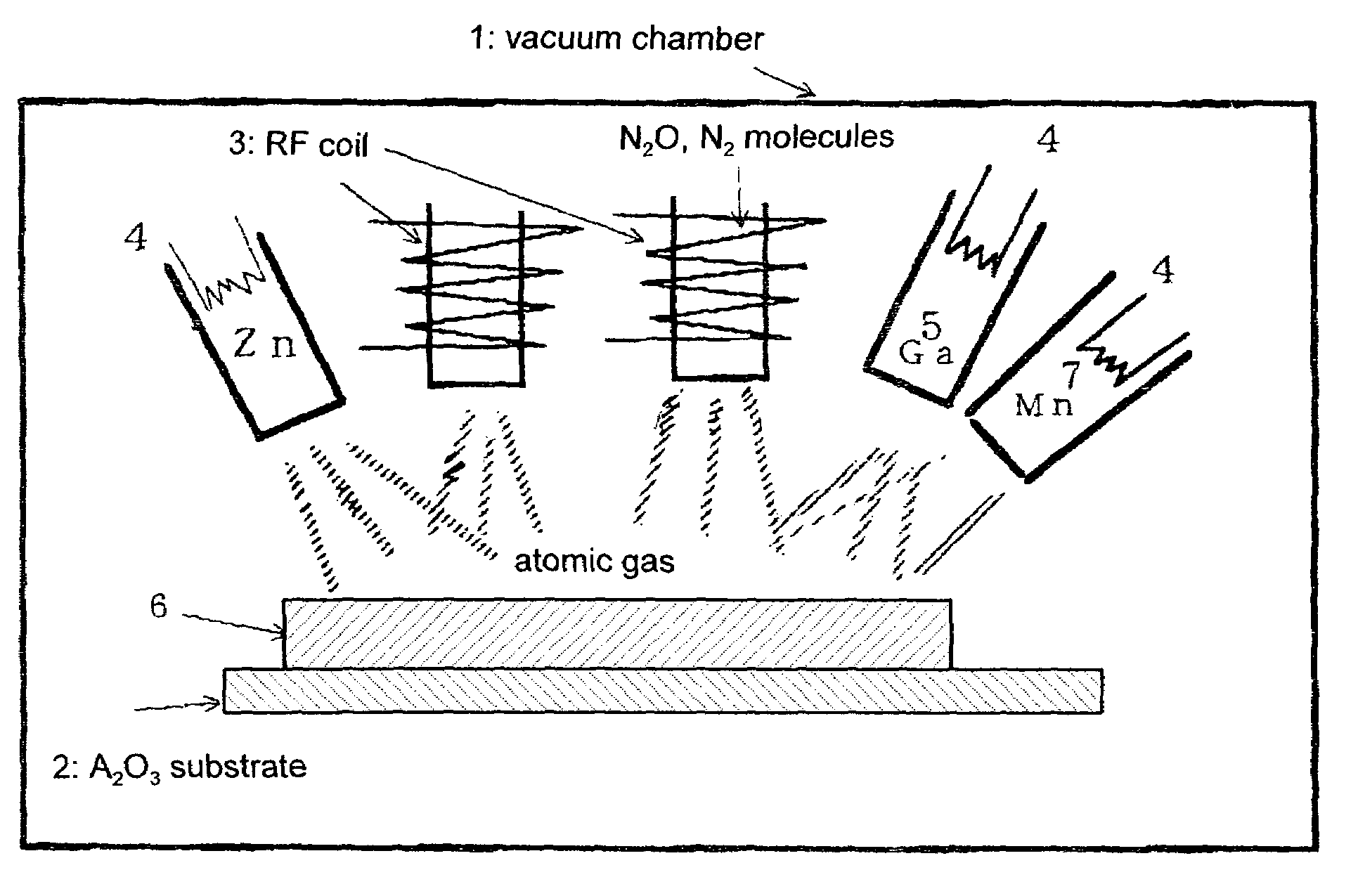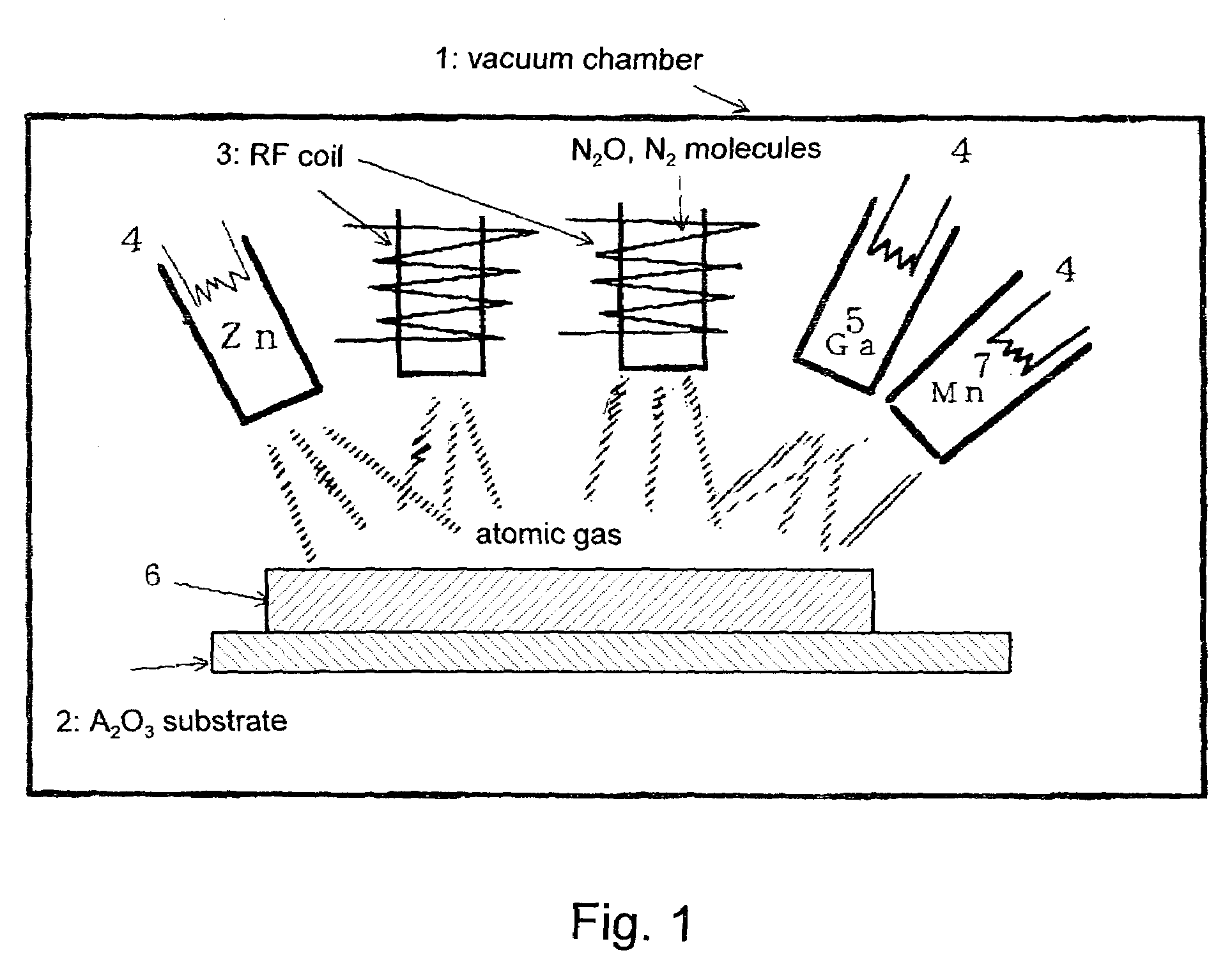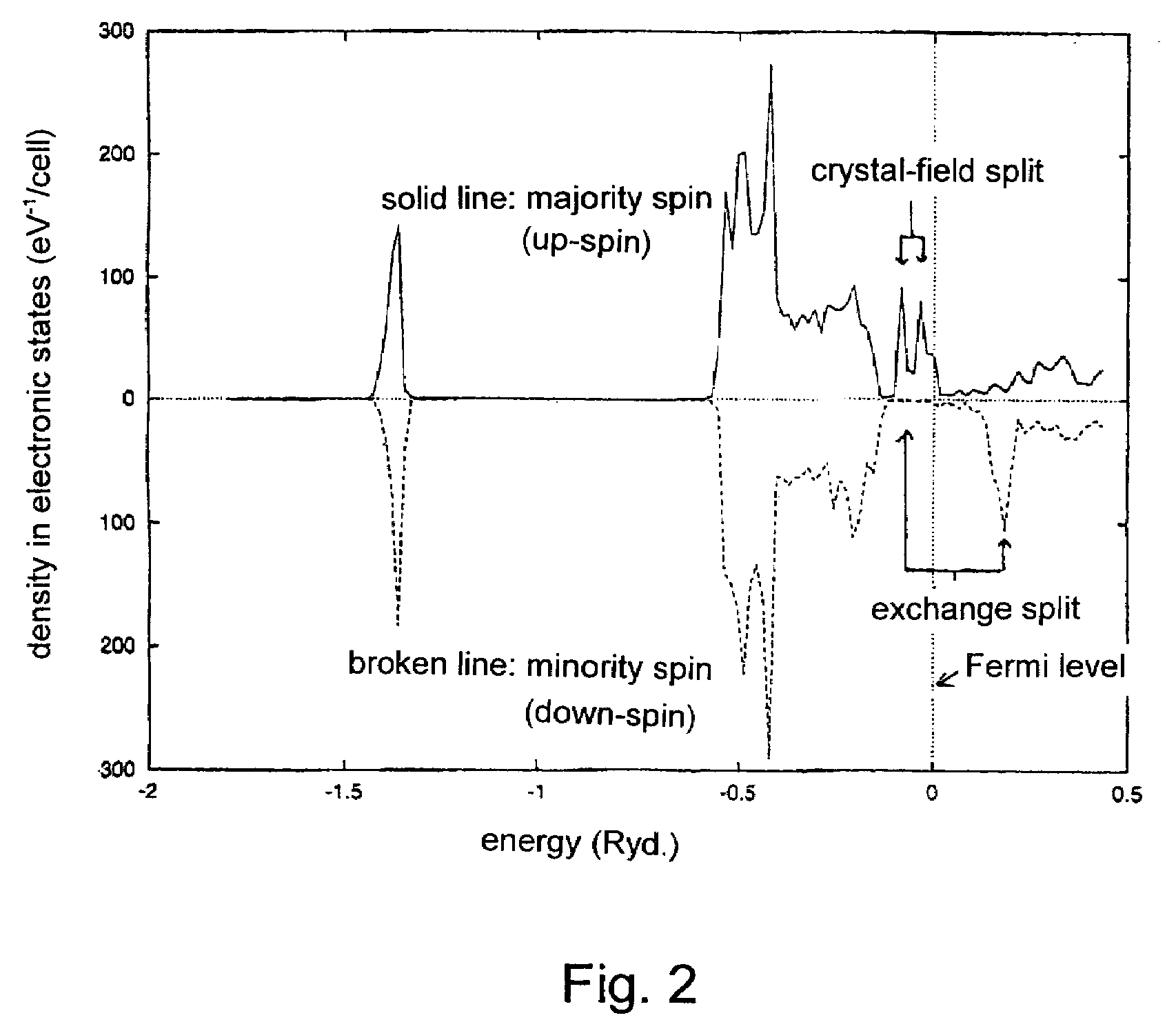Ferromagnetic p-type single-crystal zinc oxide material and manufacturing method thereof
a technology of manufacturing method, which is applied in the field of mndoped ferromagnetic p-type single crystal zinc oxide material, can solve the problems of not being able to achieve a ferromagnetic state successfully, and achieve the effects of enhancing ferromagnetic interaction, reducing the kinetic energy of the hole, and low resistan
- Summary
- Abstract
- Description
- Claims
- Application Information
AI Technical Summary
Benefits of technology
Problems solved by technology
Method used
Image
Examples
embodiment 1
[0022]As shown in FIG. 1, an Al2O3 substrate 2 was placed within a vacuum chamber 1 maintained in a constant vacuum of 10−8 Torr. Then, both atomic gases of Zn and O (oxygen) were supplied onto the substrate 2 to fabricate a ZnO thin film on the substrate 2. Zn and Mn to be used were prepared by heating each corresponding solid-state source having a purity of 99.99999 with a heater to bring them into an atomic state. For O and N to be used, the corresponding atomic gases having a purity of 99.99999 were prepared by activating O2 and N2O (or N2) using an RF radical cell, respectively. N serving as the p-type acceptor was a nitrogen radical generated by a RF (13.56 MHz) excitation type radical beam source. Ga and Mn to be used were prepared by radiating the microwave level of electromagnetic waves to each corresponding molecular gas or by bringing each corresponding elemental cell into an atomic state under a high temperature.
[0023]ZnO is transparent because of its large band gap of 3...
PUM
| Property | Measurement | Unit |
|---|---|---|
| ferro magnetic-transition critical temperature | aaaaa | aaaaa |
| hole concentration | aaaaa | aaaaa |
| temperature | aaaaa | aaaaa |
Abstract
Description
Claims
Application Information
 Login to View More
Login to View More - R&D
- Intellectual Property
- Life Sciences
- Materials
- Tech Scout
- Unparalleled Data Quality
- Higher Quality Content
- 60% Fewer Hallucinations
Browse by: Latest US Patents, China's latest patents, Technical Efficacy Thesaurus, Application Domain, Technology Topic, Popular Technical Reports.
© 2025 PatSnap. All rights reserved.Legal|Privacy policy|Modern Slavery Act Transparency Statement|Sitemap|About US| Contact US: help@patsnap.com



